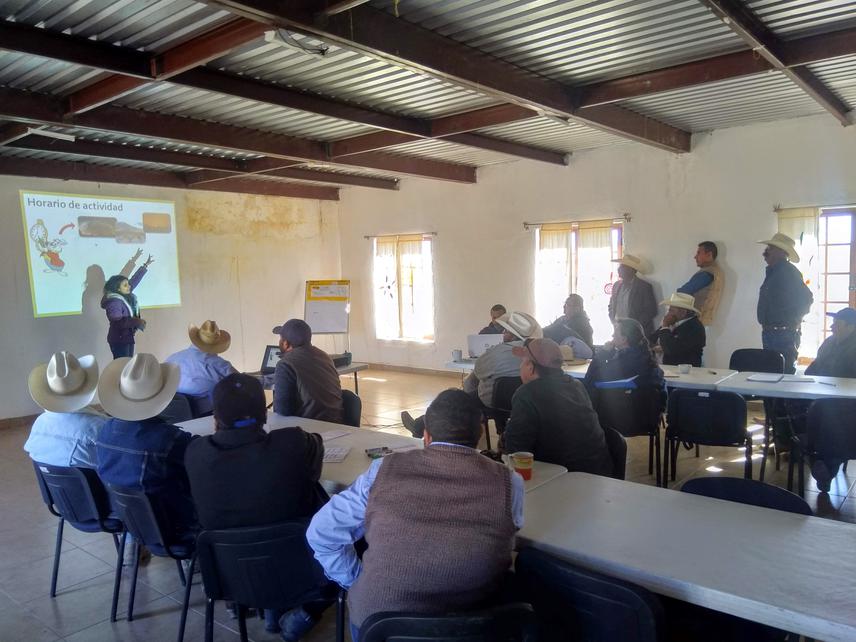Jessica Durán Antonio
With this work we will determine the effect of human disturbances, such as livestock grazing in the community of carnivore mammals’. We will also identify the variables that make up the appropriate habitats of the carnivores in the Chihuahuan desert in Mexico, as well as the competitive interactions between these species. The results of this work will contribute to the understanding of the variation patterns of the spatial ecology of carnivores in this reserve. In addition, the knowledge generated on habitat factors, as well as human disturbances on the presence and co-occurrence of carnivores, will lay the foundations for an effective mitigation of the negative effects of grazing, through better livestock management and conservation activities, to guarantee the protection of the carnivores, their prey and the habitat where they coexist, in collaboration with the local communities and the reserve authorities.

Carnivores play an important role in ecological communities as predators in the trophic networks. In addition to the environmental and biotic factors that influence its presence and abundance, human activities constitute an important pressure for its survival. With the aim of contributing to the conservation of carnivores such as, kit fox (Vulpes macrotis zinseri), american badger (Taxidea taxus), puma (Puma concolor), bobcat (Lynx rufus), coyote (Canis latrans), gray fox (Urocyon cineroargenteus), two skunk species (Mephitis macroura and Conepatus leuconotus) in the Mapimi Biosphere Reserve, a protected natural area representative of the Chihuahuan Desert in Mexico, and to reduce the negative effects of grazing on them and their habitat, we will place trap cameras for three weeks without baits, between 2018 and 2019 during the dry season and the post-rainy season to obtain records of the presence of carnivores.
In the same way, habitat variables such as prey availability and grazing pressure will be obtained through field data. As well, terrain variables such as distance to water bodies and roads will be obtained through Geographic Information Systems. Finally, an index of the vegetation will be extracted through the analysis of satellite images. We will adjust occupancy models and co-occurrence of species models to the data obtained, to define the determinant variables on the presence of carnivores and the interaction between these species. The results obtained will be shared with the community and the local authority of the reserve to raise awareness of the importance of carnivores in the ecosystem and together propose strategies for conservation and better management of livestock activities in the reserve. This will guarantee the conservation of carnivores in this area as well as their prey and associated habitats.